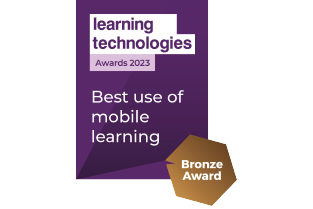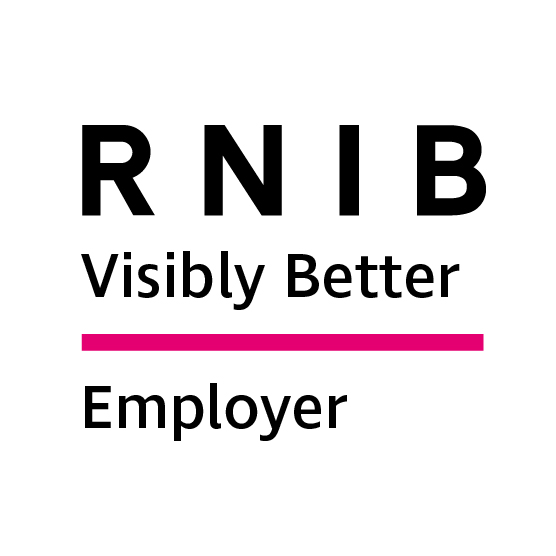Proving Learning Works: Trends Driving Workplace Training in 2025
The question for 2025 isn’t just what your workforce is learning - it’s how well you can prove it’s working. So, where do you start? In this article, we’ll explore the top trends shaping the learning landscape in 2025, to help you achieve your goals.
Artificial Intelligence (AI) is already making waves in workplace learning, powering personalisation, automating tasks, and providing insights that make a real difference. And as we look ahead to 2025, it’s clear AI will continue to be a driving force behind innovation in training and development.
But AI is just one part of the story. In this article, we’ll dive into what is piquing our interest for 2025 to transform workplace learning and explore how these advancements can help your organisation stay ahead in a fast-changing world.
Posted 4 December 2024
1. Integrated Learning: Building Skills Without Breaking Momentum
Employees often view training as a disruption, but 2025 will see learning become an integral part of the workday. Solutions like microlearning - short, focused bursts of training - have been around for forever, essentially delivering the knowledge in digestible formats that employees can easily fit into their schedules. Whether accessed on a mobile device during a commute, squeezed in between meetings, or reviewed before starting a task, microlearning integrates seamlessly into even the busiest workdays. The key is having the right platform that meets your people where they are ensuring a consistent flow of skill development without compromising productivity.
For your businesses, the benefit is twofold: employees gain the skills they need without downtime, and the seamless integration enhances adoption rates, maximizing the ROI of training initiatives.

2. Immersive Learning: Bringing Training to Life
Imagine practising critical skills in a high-stakes scenario without any real-world risk—sounds ideal, right? That’s exactly what Virtual Reality (VR) and Augmented Reality (AR) bring to the table. These immersive technologies transform training by creating safe, controlled environments where employees can build confidence and expertise.
Take VR, for example. It’s already a game-changer in industries like aviation and healthcare, where professionals can rehearse emergency responses or high-pressure tasks, sharpening their decision-making skills without any real consequences. Meanwhile, AR adds a practical edge, overlaying digital guidance onto real-world tasks. From step-by-step equipment fixes to interactive product demos, AR keeps learning hands-on and engaging.
What makes VR and AR stand out is their ability to make learning unforgettable. By placing employees in lifelike situations, these tools don’t just teach - they embed skills and knowledge in a way traditional methods simply can’t match.
The benefits for your business? A workforce that’s better prepared, more confident, and able to develop skills faster - all while keeping downtime to a minimum, reducing health and safety risks through muscle memory training, and maximising the return on your training investment.

3. Soft Skills: The Human Edge in a Tech-Driven World
The skills that make us human - Empathy, negotiation, cultural awareness, and effective communication aren’t just buzzwords, they’re what help employees thrive in teams, adapt to change, and handle uncertainty with ease.
These abilities are becoming even more essential as workplaces grow more dynamic and interconnected. In 2025, soft skills development will be a top priority for organisations that want to build agile, forward-thinking teams. After all, no amount of tech can replace the value of emotional intelligence and adaptability.
For your business, the benefits go beyond building a strong team. Developing and measuring soft skills can help you demonstrate the real-world impact of your training. A workforce equipped with these abilities isn’t just confident and adaptable - it’s one that delivers tangible results, helping you prove your learning initiatives are driving success where it matters most.

4. Embedded Learning: Training That Fits Seamlessly
Gone are the days when training felt like an interruption. Today, employees expect learning to fit seamlessly into their workday, becoming a natural part of their career growth. One way to achieve this is by linking learning management systems, like eNetLearn, with the tools people already use daily - think Microsoft Teams or Zoom. This means employees can access training materials, join live sessions, or complete courses without leaving their workspace.
This integrated approach is especially valuable for remote and hybrid workers, giving them easy access to development opportunities wherever they are. And it’s not just convenient - it keeps them connected and engaged with learning in a way that feels effortless.
By 2025, embedding learning into everyday workflows will be essential. For your business, this approach offers double the value: keeping employees engaged and productive while making it easier to track training data. With this level of integration, you can clearly demonstrate how learning is impacting performance, helping to prove that your workforce development is truly driving results.

5. Social Learning: Strengthening Teams Through Connection
We’re naturally wired to learn from each other, which is why social and collaborative learning is such a powerful approach. Although not quite so easy nowadays with the flexible working policies now available to many. By encouraging employees to share knowledge, exchange ideas, and work together, it fosters a culture of continuous learning and teamwork - perfect for today’s fast-paced workplaces.
Platforms like eNetEnterprise make this easy, offering tools such as discussion forums, peer mentoring programs, and digital collaboration spaces. These features help employees connect and learn from one another, no matter where they’re working. For example, discussion boards let teams troubleshoot problems, share insights, and brainstorm solutions together, building both skills and a sense of community.
Looking ahead to 2025, social learning will play an even bigger role as businesses aim to unlock the collective intelligence of their teams. The payoff? A more engaged and connected workforce, with clear evidence of how collaboration boosts learning outcomes, problem-solving, and overall performance. It’s not just about teamwork - it’s about proving that learning works better together.

6. Data-Driven Learning: Turning Insights into Impact
In the world of learning and development, data is your best friend. It’s what helps you move beyond guesswork to understand what’s working, what isn’t, and where improvements are needed. Modern learning management systems, like eNetLearn, make it easy to track engagement, performance, and progress - all in real time.
eAssessment tools are a game-changer here, too. By embedding assessments into training programs, you can pinpoint skill gaps, monitor development, and refine strategies to meet your team’s needs. Tools like eNetAssess even let you tailor assessments to align with your goals, ensuring every learning outcome ties directly to business success.
But data isn’t just numbers on a screen. Employee feedback - collected through forms or surveys built into your LMS - adds a vital human perspective. Combine this with dashboards, like those available in eNetEnterprise, and you’ve got a full picture of what’s happening. These dashboards highlight key metrics, from engagement levels to skill gaps, giving you the clarity to make decisions that drive results.
The real power of data-driven learning? It proves your training is making a difference. By linking learning outcomes to tangible business results - like higher productivity, happier customers, or fewer errors - you can show exactly how your investment in training pays off. As we move into 2025, leveraging data to demonstrate the impact of workforce learning won’t just be a trend - it’ll be a necessity.

Bringing it all together
The trends we’ve explored - from immersive technologies to integrated workflows, social learning, and data-driven strategies - show where digital learning solutions can truly transform your workplace training. These are our focus areas because they not only help you upskill your workforce but also provide clear, measurable evidence of how well it’s working.
We would welcome the opportunity to work together to help you achieve your learning goals for 2025. Please get in touch today to explore the possibilities.
Recent Posts
eCom Learning Solutions: Staying ahead in a constantly evolving landscapeIs your work changing, or just your tools? A question for the modern workforce
What is competency? And why it matters in the workplace
Bridging the integrity gap: A proactive approach with eNetEnterprise
Proving Learning Works: Trends Driving Workplace Training in 2025












